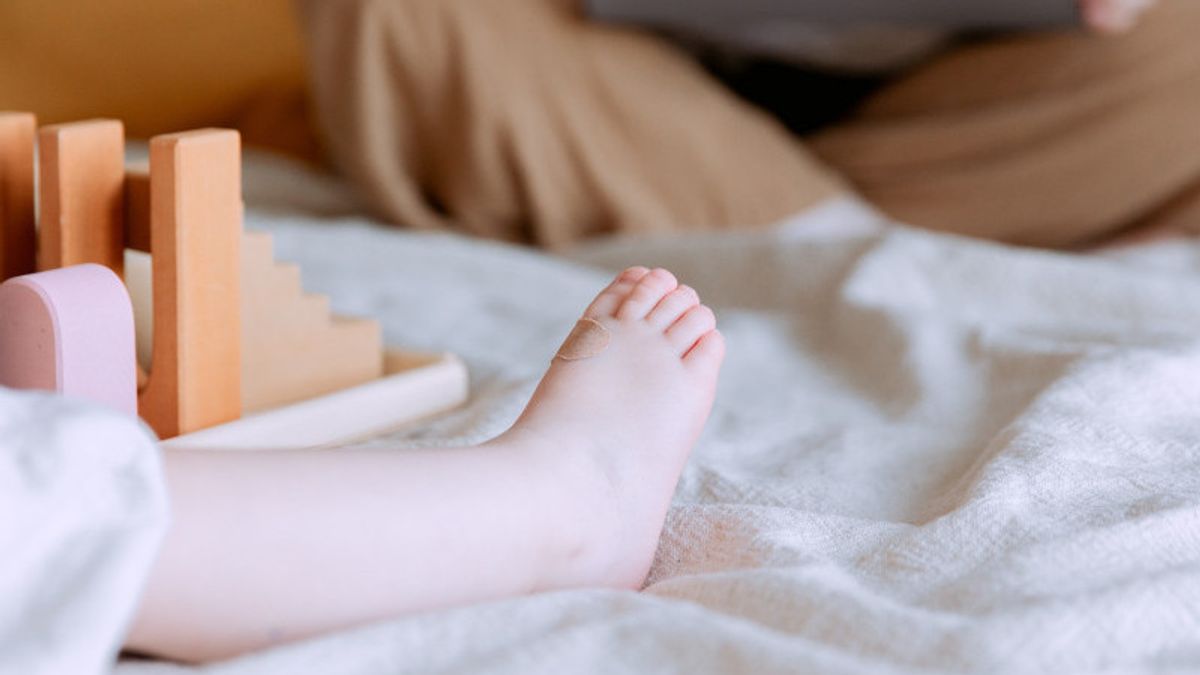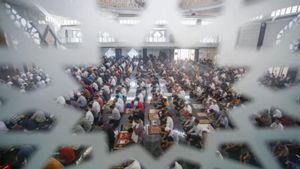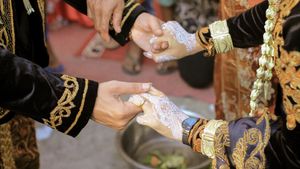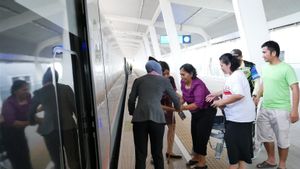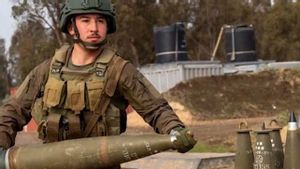JAKARTA - Parents often choose alternative medicine related to joint and bone problems. This is also applied to their children if they are suspected of having sprains, tendons, and even broken bones.
Even though this condition is not always true, because it is possible that the painful and swollen joints and bones may actually be caused by osteosarcoma bone cancer, which will actually get worse when massaged.
Pain and swelling, especially around the knee, are early signs of osteosarcoma bone cancer that must be treated immediately. Oncology surgeon Prof. Dr. dr. Achmad Fauzi Kamal SpOT (K), said the child's condition could be even worse if the swollen and painful part was massaged.
In a webinar of the Indonesian Children's Oncology Foundation, Saturday, Fauzi explained that if the swollen part is massaged or massaged, it will stimulate cancer cells to grow faster and the tumor to spread quickly.
The lecturer at the Faculty of Medicine, University of Indonesia explained that osteosarcoma is a primary bone cancer that is commonly found in children and adolescents. Osteosarcoma is most commonly found in the bone around the knee, either at the end of the femur or at the base of the shin.
Swelling and pain are early symptoms to watch out for, especially if the pain gets worse despite being treated with regular pain relievers.
"The characteristic is progressive pain, after taking medication it will subside, then the pain gets worse, then the pain doesn't respond to regular painkillers," explained Fauzi.
Swelling experienced varies, can be very large until the skin is thinning. Other symptoms are drastic weight loss and the patient is unable to walk. Sometimes also accompanied by fractures. The pain can also be so annoying at night that your child has trouble sleeping.
“If the child experiences these symptoms at the age of 10-20 years, parents should be suspicious and take them to the doctor because it is almost certain that it is a bone malignancy. Why is it almost certain? Because tumors usually don't hurt," he said.
SEE ALSO:
Compared to other types of cancer in children, the incidence of osteosarcoma is relatively low. However, this cancer is very progressive and the mortality rate is quite high.
According to WHO, the prevalence is around 4-5 people per 1 million population. The peak incidence of osteosarcoma is at the age of 10-20 years which reaches 70 percent. At Dr. Ciptomangunkusumo General Hospital, there were 219 cases of osteosarcoma based on data from 1995-2007. There are around 16 cases per year and since 2014 until now 19 cases have been found per year.
Recognizing the symptoms early and swiftly taking the child to the doctor will determine the final outcome of the course of osteosarcoma cancer, because this cancer can get worse in a matter of weeks to months. Osteosarcoma can spread to the lungs, other bones, and bone marrow.
"Don't procrastinate. This cancer grows very quickly, so parents should immediately take them to the doctor as soon as the initial symptoms appear. It would be better if they were immediately taken to a hospital with complete facilities that can treat bone cancer."
In general, doctors can conclude the diagnosis of osteosracoma from the patient's physical appearance. But the diagnosis still has to be confirmed by X-Ray examination, and if necessary CT Scan and biopsy. Sometimes, from the results of a CT scan, about 45 percent of osteosarcomas are found in other bones.
Treatment of osteosarcoma: chemotherapy, surgery, or amputation
The main treatment for osteosarcoma is chemotherapy and surgery, namely the removal of the tumor or amputation. According to Prof. Fauzi, osteosarcoma is a type of cancer that is resistant to chemotherapy and radiology, so the chemotherapy dose is generally higher.
He invites parents to be optimistic and heartened if their children have to undergo chemotherapy because almost all patients can go through the process.
"Parental support is important when children undergo chemotherapy," said Fauzi.
Pediatrician consultant pediatric hematology dr. Bambang Sudarmanto, SpA (K) from RSUP dr. Kariadi Semarang said chemotherapy is mandatory therapy for the treatment of osteosarcoma.
Chemotherapy can be done before surgery, or surgery before chemotherapy. But both must be done, "explained Bambang.
He explained the benefits of chemotherapy for patients, namely, osteosarcoma has a good response to chemotherapy, there is hope that the tumor will shrink so that surgery is easier, it is also effective in killing cancer cells that may spread elsewhere.
Side effects that can be felt by pediatric patients are nausea and vomiting, then decreased appetite which automatically makes growth and development disturbed because children are reluctant to eat. Other side effects are diarrhea, constipation, hair loss, and mucositis.
He revealed that the side effects of chemotherapy on children tend to be milder than adult patients, so parents don't have to worry too much. Often the child recovers even faster from the side effects, so the doctor may give a higher dose of chemotherapy to try to kill the tumor.
However, there is also one effect of chemotherapy that should be wary of, namely depression in the bone marrow which makes children susceptible to infection due to reduced white blood cells, and easy bleeding due to reduced platelets. Children also easily feel tired because of reduced red blood cells.
He explained the stages of chemotherapy treatment in osteosarcoma. The first was neoadjuvant chemotherapy, which was administered 10 weeks before surgery. The goal is to shrink the tumor mass. Next is surgery or amputation. After surgery, the patient received adjuvant chemotherapy.
Chemotherapy is given in cycles. Each treatment period is followed by a period of rest so the body has time to recover. Each cycle usually lasts for several weeks.
Parents of osteosarcoma patients are advised to get correct and accurate information about the drugs given to their children, including any side effects.
Although rare, there are chemo drugs that cause hypersensitivity reactions. Symptoms include shortness of breath, chest pain, itching, facial flushing, heat, hypotension, and impaired consciousness.
So, parents need to discuss how to prevent and cope if side effects occur. Do not forget to do monitoring or laboratory tests according to the specified time to find out the side effects of chemotherapy.
Prof. Fauzi added, not all osteosarcoma patients will be amputated. Amputation is done if the cancer cells have involved major blood vessels, there are fractures, and infection (wide wounds).
If amputation can be avoided, a surgical procedure is performed by removing or cutting the bone affected by the tumor. This bone is then "treated" specifically and cleared of cancer cells. Usually with radiation.
“While waiting for the bone to heal, the patient is given a bone prosthesis until the original bone is declared clean and can be reassembled. Unfortunately, the price of this prosthesis is quite expensive and currently, its availability is not much,” explained Prof. Fauzi.
Patients who have recovered from this cancer must continue to have regular check-ups as prescribed, because there is still the potential for relapse and the cancer cells to spread.
There is no known way to prevent osteosarcoma, although certain factors such as past radiation therapy or genetic conditions may be factors that increase the risk. However, having risk factors does not always mean you will get osteosarcoma. Therefore, any signs or symptoms should be checked as soon as possible.
The English, Chinese, Japanese, Arabic, and French versions are automatically generated by the AI. So there may still be inaccuracies in translating, please always see Indonesian as our main language. (system supported by DigitalSiber.id)
